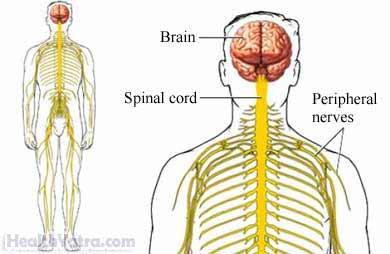Definition
Variant Creutzfeldt-Jakob disease (vCJD) is a type of prion disease. Bovine spongiform encephalopathy is a prion disease that affects cows. There is evidence that this illness can be transmitted to humans, producing vCJD. This illness is often called mad cow disease.
Causes
Prion diseases are a unique form of infectious diseases. The disease is not produced by a bacterial or viral infection. Instead, the illness is related to the build up of prions, which are infectious protein particles. The central nervous system is slowly damaged as these prions build up.

Risk Factors
Exposure to prion containing tissue is the primary risk factor. Other risk factors include:
- Eating beef from infected cows
- Receiving human growth hormone (HGH) injections prior to the mid-1980s—Changes in the preparation of HGH in the mid-1980s eliminated this risk.
- Working with brain tissue
- Receiving a corneal or brain lining transplant
Five to ten percent of all cases of the nonvariant form of Creutzfeldt-Jakob are inherited.
Symptoms
The average age of people who get this disease is 29 years old. Rare cases have been reported in children.
After you are exposed, it can take up to 20 years until symptoms develop. When symptoms develop, they usually follow these three phases:
- Early phase (0 to 6 months)— psychiatric symptoms, such as depression, anxiety, withdrawal, memory problems, and difficulty pronouncing words
- Middle phase—neurologic symptoms predominate, such as abnormal gait, problems with coordination, muscle jerks and stiffness, and impaired speech
- Late phase—mute, immobility
The average length of time from first symptoms to death is 13 months, with a range of 6-39 months.
Diagnosis
The clinical history and physical exam are the primary diagnostic tools. If your doctor suspects vCJD, additional tests may be needed, such as:
- You may need to have your bodily fluids and tissues tested. This can be done with:
- Blood tests
- Cerebrospinal fluid analysis
- Lumbar puncture
- Biopsy
- You may need to have pictures taken of your bodily structures. This can be done with:
- MRI scan
- CT scan
- SPECT or PET scan
- You may need to have your brain function evaluated. This can be done with anEEG.
In many cases, final diagnosis requires autopsy and additional studies.
Treatment
Currently, there is no cure for vCJD. Treatment is primarily supportive, maximizing function and minimizing discomfort.
Prevention
About 200 worldwide cases of vCJD have occurred to date. Most of these were associated with beef consumption in the United Kingdom. There is a great deal of controversy regarding the safety of US beef. Bovine spongiform encephalopathy have been detected in the US. However, no cases of vCJD have been attributed to eating US beef. US patients with vCJD were deemed to have obtained it outside of the US.
To minimize risk, it is advised that you avoid beef products, particularly processed meat like sausages and hotdogs, or beef items containing brain, spinal cord, or bone marrow.
